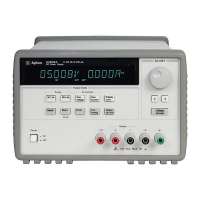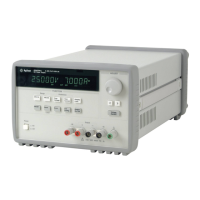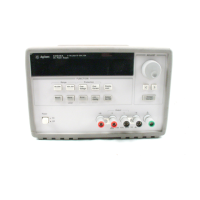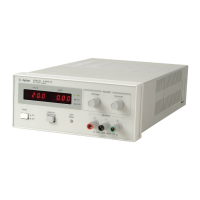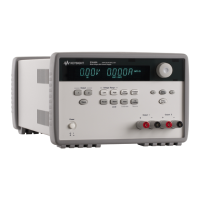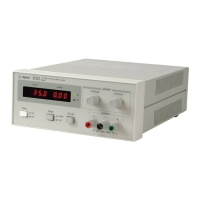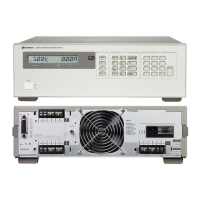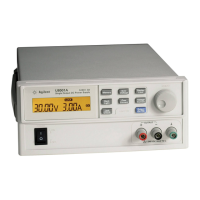Chapter 4 Remote Interface Reference
Output Setting and Operation Commands
77
4
INSTrument:COUPle[:TRIGger] {ALL | NONE |<list>}
This command defines a coupling between various logical outputs of the power
supply. The couple command consists of an optional subsystem node followed by a
single parameter. The only valid parameter for the optional subsystem node is
TRIGger subsystem. If no node follows the couple command, TRIGger subsystem
is assumed to be coupled.
The parameter indicates to which logical outputs the specified coupling is to apply.
“ALL” indicates that specified coupling is to apply to all outputs. “NONE” indicates
that specified coupling is to be removed. A list of outputs specifies a particular set of
logical outputs to be coupled. At *RST, all outputs are uncoupled. Notice that TRACk
must be off before the ±25V supplies can be coupled.
INST:COUP The following program segment shows how to use the INSTrument:COUPle
command to couple two outputs between the +6V and the +25V outputs with
voltage and current triggered levels. The power supply is set to the newly
programmed values as set by the VOLTage:TRIGgered and
CURRent:TRIGgered commands.
"INST:SEL P6V" Select the +6V output
"VOLT:TRIG 5" Set triggered level to 5 V
"CURR:TRIG 3" Set triggered level to 3 A
"INST:SEL P25V" Select the +25V output
"VOLT:TRIG 20" Set triggered level to 20 V
"CURR:TRIG 0.5" Set triggered level to 0.5 A
"INST:COUP P6V,P25V" Couple the +6V and +25V supply
"TRIG:SOUR IMM" Set trigger to immediate
"INIT" Trigger the power supply to output
the trigger values for
the +6V and the +25V supplies
Note If you select the bus trigger source in the above program (see page 81 for the detailed
information), you must send the *TRG or Group Execute Trigger (GET) command to
start the trigger action after sending the INITiate command.
Example (1)
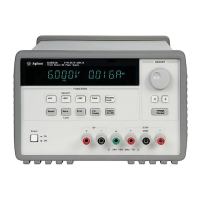
